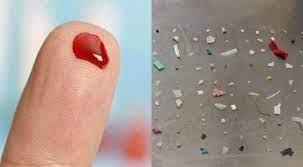Live Classes

Detecting microplastics in human blood.
Microplastics are tiny bits of plastic found in the environment in various places — the oceans, the environment, and now as per recent studies in human blood as well. In the study, blood from 22 healthy volunteers was collected and analysed for its plastic content. It found that 77% of tested people (17 of the 22 persons) carried various amounts of microplastics above the limit of quantification. It is not yet clear if these microplastics can cross over from the blood stream to deposit in organs and cause diseases. The story so far: Microplastics are, as the name suggests, tiny particles of plastics found in various places — the oceans, the environment, and now in human blood. A study by researchers from The Netherlands (Heather A. Leslie et al, Environment International, Published online 24 March) has examined blood samples of 22 persons, all anonymous donors and healthy adults, and found plastic particles in 17 of them. A report on this work, published in The Guardian conveys that about half of these were PET (polyethylene tertraphthalate) plastics, which is used to make food grade bottles. The size of the particles that the group looked for was as small as about 700 nanometres (equal to 0.0007 millimetres). This is really small and it remains to be seen if there is a danger of such particles crossing the blood cell walls and affecting the organs. Also, a larger study needs to be conducted to firm up the present findings.
Download pdf to Read More